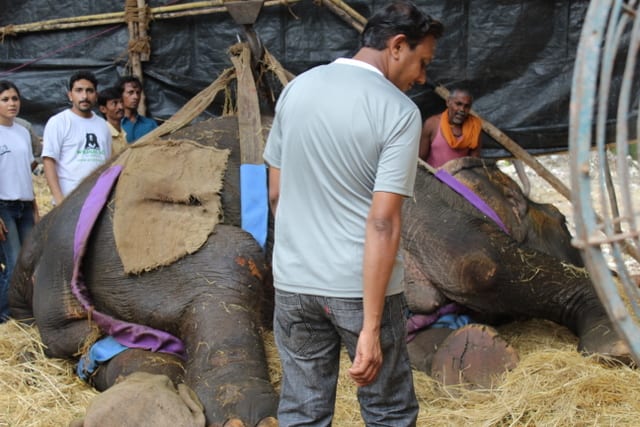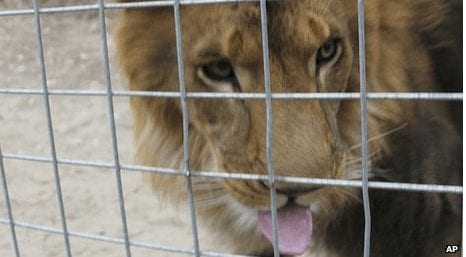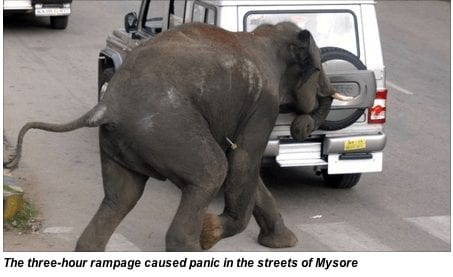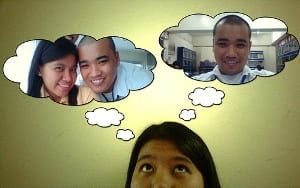Health Care in India
To speak of growth is to allude to one thing only: economic development, GDP and GNP figures, which of course should be increasing for the world to stay on track to become a global shopping emporium. The word has been confiscated by the economically erudite and the political ideologues. Monthly statistics are chanted, mantra like, by the politically aligned media, ignored by most and washed away with the residue. They are of no consequence to the majority trying to meet the basic requirements of living and are issued along with other contemporary anxiety stimulants: deficit, austerity and debt to name but three of the more popular narcotics of control.
India has recorded two delightful decades of around 9% ‘growth’, which has produced umpteen rupee resplendent billionaires who live in decadent luxury in the cities. Along with the government, which is seduced by all things corporate, they turn a comfortable blind eye to the hundreds of millions living in rural poverty and those in slums on the other side of town, where children play beside open sewage, where there are no functioning toilets or latrines: where child malnutrition is rife and where there are no health care facilities worthy of the name. The billionaires sit aloft a hierarchy of corporate wealth and power: they tower over the lesser millionaires (in 2012 there were 152,750 US $ millionaires); and see in the far distance the desperately upwardly that form a gaggle called the ‘new middle class’.
This group of city dwellers has benefited greatly from twenty years of market liberalization and government reforms, which have shifted support from the needy to the corporate greedy, resulting in increased levels of rural poverty and a multitude of suffering. The United Nations Human Development Index (UNHDI), which “represents a push for a broader definition of wellbeing and provides a composite measure of three basic dimensions of human development: health, education and income”, paints a vivid picture of Indian life after years of economic flowering. India comes in 136th out of 187 countries. Factor in inequality – “in each dimension of the HDI” plus gender inequality (considering the disadvantages facing women and girls), and India plummets even further down the table.
So, following P.Sainath’s noble lead, one asks who is this growth for? Not the poor, the marginalized and dispossessed, the Dalit’s (untouchables) or Adivasi (indigenous) people, the smallholder farmers, children and certainly not women.
Inequality and illness
The inequities in health care provision represent the extreme levels of inequality and social injustice pervading the country, as The Lancet makes clear, “mainly because of insufficient government funding for health.” Although the urban population continues to grow (currently thought to be around 377 million), by most estimates 75% of the population – (a staggering 900 million people) live in rural areas, where health-care is universally appalling. It is here in relation to health, disease and mortality that statistics have meaning to the people. According to the World Health Organisation (WHO), India as a whole accounts “for 21% of the worlds global burden of disease”: as a % this is greater than the population ratio. The 21% is concentrated in rural areas where diseases lead to huge numbers of deaths that, correctly diagnosed and given access to treatment, are preventable. It is thought e.g. that over 2 million deaths occurred in 2008 due to preventable causes, such as diarrhea, dengue, measles, typhoid and malaria. The middle and upper classes seduced as they are by multi-national western exports of fast food, cigarettes and alcohol have seen stark increases in obesity-related illnesses like diabetes and cardiovascular problems, records Health India.
Mahatma Gandhi believed the soul and spirit of India rested in its village communities. He said: “The true India is to be found not in its few cities but in its seven hundred thousand villages. If the villages perish, India will perish too.” Neglected and ignored rural communities are indeed perishing:
Adivasi people, who have lived on the land for generations, are being displaced in their millions as mining companies move in to extract the bauxite, iron-ore and tin. Trapped into debt and crushed by the corporate take-over of the countryside, smallholder farmers, of which there are an estimated 120 million (down 9 million since 2001), are committing suicide at the unimaginable rate of two every hour. Huge infrastructure projects are underway throughout the country, the waterways are being swiftly privatized and millions of villagers, with no access to adequate health care, are dying. One imagines the ‘Father of the Nation’ would be ashamed, as the current government should be.
Within rural areas there is a dire lack of health care resources; human and material, including medicines as well as properly equipped Primary Health care centres (PHCs), which are the main state run facility. Although India is said to have a Universal health care system administered by the various states, who have as their “primary duty” as stated in the constitution the “raising the level of nutrition and the standard of living of its people and the improvement of public health”, up to 60% of the population do not have access to adequate health care provision.
The conurbations, (with just 25%/30% of the population), have four times more doctors and three times more nurses than the PHCs in rural India; this means that of the latter almost 10% have no medical staff at all, 40% are without lab technicians and almost 20% lack a resident qualified pharmacist. The results of this dearth of medical support is (and here are some more statistics that matter) that 50% of all villagers have no access at all to allopathic healthcare providers, 10% of all babies die before their first birthday and 50% of all rural babies are likely to be permanently stunted for want of proper nutrition [according to Health India].
Water and Waste
Limited access to safe drinking water coupled with non-existent sanitation in rural India (and city slums) is a major factor in the spread of parasitic and bacterial infections, causing disease and malnutrition. Over a third of people living in villages have no access to toilets, while 50% of the population defecate in the open, added to which UNICEF, finds that “44% of mothers are disposing of their children’s faeces in the open”, resulting in “a very high risk of microbial contamination (bacteria, viruses, amoeba) of water which causes diarrhoea in children”, which is the primary cause of childhood mortality. Within rural families they found that only 11% “dispose of child stools safely”, whilst “80 % are left in the open or thrown into the garbage”, and shockingly, “only 6% of rural children less than five years of age use toilets”.
Drinking water is another major source of disease, and whilst UNICEF makes clear that access to safe sources of drinking water has improved, (from 68% in 1990 to 88% in 2008), with under a quarter of slums dwellers having access to this most rudimentary of needs, inequality poisons even their most basic human right. The problem is made worse, they say, by falling levels of groundwater, groundwater pollution and the widespread natural occurrence of “arsenic and fluoride in the groundwater”, which pose a major health threat. Proper sanitation methods and clean drinking water are not an issue of concern within the high-rise middle class city developments, or the gated communities in Delhi and Mumbai: they have toilets, bidets and Evian, or some such. It is the 75% that are left without health care, with restricted access to safe drinking water and no sanitation facilities. Where has the 9% growth gone?
The divide between the tiny percentage that have benefitted from economic development and market liberalization, and the vast majority that have been condemned to a life of extreme poverty and illness, is approaching cosmic proportions. Most people live in rural areas, but the beneficiaries of growth have primarily been city residents, where wealth is concentrated in the coffers of a handful of men. It is said that the 100 richest Indians own wealth equivalent to 25% of the national GDP (Annual GDP $1.84 trillion 2012), and, whilst Mukesh Ambani the chairman of Reliance Industries earns $18 million a year two-thirds of the population (according to the World Bank), lives on less than $2 a day. The 9% begins to rise to the divisive surface.
Two decades of economic growth have granted great benefits to the Ambani’s of India, but no improvements to the lives of rural people, and in particular have effected no change to health provision. Child malnutrition for example, which at 48% (UNICEF) is the highest in the world, fell by just 1% in the years since 2001.
Gender inequality compounds the economic and social divisions in the country. The treatment endured by women is universally appalling across a range of areas. Rape, (although barely reported-there is little point when cases take years to process), is endemic, female infanticide is widespread (12 million girls were aborted during the last two decades according to the United Nations UN), dowry killings commonplace: a trinity of abuse at the top of a list of mistreatment suffered by Indian women (specifically but not exclusively poor women). Add to this poor maternal health, causing 57,000 maternal deaths in 2010 (one mother dying every ten minutes, most of which occurred in rural areas), making India home “to the greatest burden of maternal, newborn and child deaths in the world”, (the WHO report). Forced marriage, although illegal is commonplace causing almost 50% of Indian women to (reluctantly) marry before they reach 18, resulting in early pregnancies, high morbidity and mortality rates, to say nothing of the unrecorded levels of depression and anxiety. Poor health care provision for women sits within a broader, horrific picture of gender inequality and prejudice, state neglect and female suffering. Collectively, according to a recent study by TrustLaw, they make India, the worst country for a woman to live out of the G20 nations, one place below Saudi Arabia.
Private Public
Health care is offered by public and private providers: with the public Primary health care centers (PHCs) understaffed and under-resourced with restrictive opening times, as well as long waiting times and in many cases sited miles from villages, the majority of visits (92%) are made to private centers. Around 70 % of private visits are made by city dwellers. They pay for their care by making ‘out of pocket’ payments, i.e. not covered by health insurance, which, The Guardian reports, only 11% of the population possess. The private sector has the monopoly on medical staff and materials, with, according to Government figures, 80% of all doctors, 26% of nurses, 49% of beds and 78% of ambulatory services working for the corporate boys. Care is expensive (up to nine times the cost of PHCs), and consistent with corporate irresponsibility, (sanctioned by government neglect and weakness); according to Gram Vaani it is “often unregulated and variable in quality. Besides being unreliable for the illiterate, it is also unaffordable by low income rural folks”.
With 9% growth for two decades one would expect a major level of government investment into health and education, however this is far from the case. Spending on public health care according to the WHO is 1.1% of GDP, placing India below Pakistan, China and Nigeria in the spending table. Cash (or out of pocket) payments are increasing (up to 80%) amongst those who have the money, but for the majority health care is an unaffordable luxury. In a country with more people living in poverty than all Sub-Saharan African countries combined, an additional 40 million a year are estimated to be forced into destitution by medical costs. So where has the growth gone; who is it for: who has benefitted from the ‘economic miracle’? The middle class have become rich; the rich have become super rich: the super rich stellar rich. This tiny group of city beneficiaries have as Arundhati Roy puts it, “ascended into outer space from where they look down at the indigenous people and the poor.” And as for the poor: their numbers have grown, their land has been stolen from them, their problems increased: they have been condemned to a life of illness, exploitation and suffering. And their voices are ignored.
Graham Peebles is director of the Create Trust. He can be reached at: graham@thecreatetrust.org








